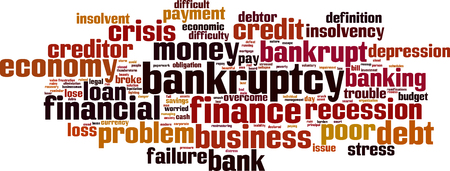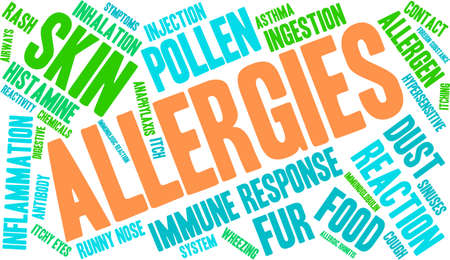1. Introduction to the Claims Process
If you have insurance—whether it’s for your car, home, health, or something else—you’ve probably heard the word “claim.” But what exactly is a claims process, and why does it matter? Understanding this is key for every policyholder in the United States.
What Is a Claims Process?
The claims process is the series of steps you follow after a loss, accident, or damage occurs that may be covered by your insurance policy. This could mean anything from a fender bender on the highway to water damage in your basement. When you “file a claim,” you’re officially asking your insurance company to review what happened and, if it’s covered, help pay for repairs or costs as promised in your policy.
Why Is the Claims Process Important?
The claims process is important because it’s how you get the financial help your insurance promises. It can make all the difference during stressful times like after an accident or natural disaster. A smooth claims process means you can recover faster and with less hassle.
Key Steps in a Typical Claims Process
| Step | Description |
|---|---|
| 1. Report the Incident | Contact your insurer as soon as possible after an event happens. |
| 2. Provide Documentation | Submit proof of loss, such as photos, police reports, or receipts. |
| 3. Claim Review | The insurance company reviews your claim and may send an adjuster. |
| 4. Decision & Settlement | Your insurer decides if your claim is covered and issues payment if approved. |
Why Does It Matter to Policyholders in the U.S.?
In the U.S., insurance policies are legal contracts and every state has its own rules about how claims should be handled. Knowing how the process works helps you avoid delays and ensures you get the benefits you’re entitled to. Whether it’s auto, homeowners, renters, or health insurance, understanding these basics puts you in control when life throws you a curveball.
2. Key Parties Involved
Understanding the main players in the claims process can make things a lot less confusing for policyholders. Here’s an easy-to-follow guide to who you’ll likely meet along the way when you file a claim:
Policyholder
This is you—the person or business that purchased the insurance policy. As the policyholder, you are responsible for notifying your insurer when a covered event occurs and providing all necessary information and documents to support your claim.
Insurance Adjuster
An adjuster is assigned by the insurance company to investigate and evaluate your claim. They look at the details of your loss, review documentation, may inspect damages, and determine how much the insurer should pay according to your policy terms.
Insurer
The insurer is the insurance company that underwrites your policy and ultimately pays approved claims. The insurer makes sure all claims follow their guidelines and legal requirements.
Third-Party Administrator (TPA)
A TPA is sometimes hired by insurers to handle certain parts of the claims process, especially with group health or large commercial policies. TPAs act as middlemen, processing paperwork and managing communications between policyholders and insurers.
Other Possible Parties
Depending on your claim, you might also interact with these parties:
| Role | Description |
|---|---|
| Public Adjuster | An independent professional hired by policyholders to help negotiate a better settlement with the insurer. They work for you, not the insurance company. |
| Contractor/Appraiser | Experts who assess damage or provide repair estimates for property claims. |
| Legal Counsel | An attorney who may assist if there are disputes about coverage or settlement amounts. |
| Witnesses/Claimants (for liability claims) | People involved in or affected by an incident who may provide statements or evidence during the investigation. |
Knowing who does what helps you stay organized and communicate effectively throughout your claims journey. If you’re unsure about someone’s role, don’t hesitate to ask your adjuster or insurance representative for clarification.

3. Essential Claims Terminology
Understanding the claims process can be overwhelming, especially if you’re not familiar with the industry’s common terms. Here’s a handy glossary of essential words every policyholder should know when dealing with insurance claims in the United States.
Key Insurance Terms Explained
| Term | Definition |
|---|---|
| Deductible | The amount you must pay out of pocket before your insurance covers the rest of a claim. For example, if your deductible is $500 and your loss is $2,000, you’ll pay $500 and your insurer covers $1,500. |
| Coverage | The protection provided by your insurance policy against specific risks or losses. It spells out what incidents or damages are included under your plan. |
| Exclusion | Specific situations or types of damage that your policy does not cover. Always check for exclusions so there aren’t any surprises when filing a claim. |
| Loss | The financial harm or damage you experience due to an event covered by your insurance policy, like fire, theft, or accident. |
| Settlement | The amount paid by the insurance company to resolve a claim. This may be a full payment or partial payment based on the terms of your policy and the extent of your loss. |
| Adjuster | An insurance professional who investigates claims and determines how much the insurer should pay for the loss. |
| Policyholder | The person who owns the insurance policy and is entitled to file claims and receive payouts. |
| Premium | The regular payment you make (monthly, quarterly, or annually) to keep your insurance coverage active. |
| Claimant | The individual making a claim under an insurance policy; often this is the policyholder but can also be someone else entitled to benefits under the policy. |
| Limit | The maximum amount your insurer will pay for a covered loss as outlined in your policy. |
| Endorsement (or Rider) | An addition or change to your basic insurance policy that modifies its coverage, often used to add extra protection or cover specific items. |
Why These Terms Matter
Knowing these key terms helps you better understand how your insurance works and what to expect when you need to file a claim. If you ever feel uncertain about any part of your policy or a term you encounter during the claims process, don’t hesitate to reach out to your agent—they’re there to help!
4. Common Documentation and Requirements
When you file an insurance claim, your insurance company will ask for certain documents and evidence to process your request. Knowing what these are ahead of time can make things go much smoother and help you avoid delays. Here’s a straightforward overview of the most common paperwork and records you might need to gather.
Overview of Typical Documents
Every claim is a little different, but insurers in the U.S. usually require similar types of documentation, depending on the nature of your claim. Here’s a breakdown:
| Document Type | Description | When It’s Needed |
|---|---|---|
| Proof of Loss | A detailed statement describing what happened and the extent of your loss or damage. | Required in almost all property, auto, and home claims. |
| Claim Form | The official form you fill out to start the claims process. | Always needed when opening a new claim. |
| Police Report | An official report filed with law enforcement describing the incident. | Needed for theft, burglary, vandalism, auto accidents, or any criminal activity. |
| Estimates/Repair Quotes | Written quotes from professionals showing how much repairs or replacements will cost. | Usually required for property damage or auto claims. |
| Receipts & Invoices | Original receipts showing proof of ownership or purchase price for lost or damaged items. | Helps validate your claim amount and speed up payment. |
Tips for Collecting Documentation
- Keep originals or clear copies of everything you submit.
- If you don’t have a receipt, photos or bank statements may help prove ownership or value.
- Submit all requested documents as soon as possible to avoid processing delays.
Why These Documents Matter
Your insurer uses this paperwork to verify your loss and determine how much compensation you’re entitled to under your policy. Providing complete and accurate information helps ensure that your claim is processed quickly and fairly. If anything is missing or unclear, your insurance adjuster may ask for more details or supporting evidence.
5. Tips for Communicating with Your Insurer
Understanding the claims process is important, but knowing how to talk with your insurance company can make a big difference. Here are some best practices and culturally relevant tips that every policyholder in the U.S. should keep in mind when communicating, following up, and advocating for yourself during the claims process.
Best Practices for Effective Communication
- Be Prepared: Gather all necessary documents, such as your policy number, claim forms, photos, and receipts before making contact.
- Stay Organized: Keep a dedicated folder (digital or physical) for all claim-related materials and correspondence.
- Take Notes: Write down the date, time, and name of every person you speak to, along with what was discussed.
- Follow Up in Writing: Whenever possible, confirm conversations or agreements via email. This creates a record you can reference if needed.
- Be Polite but Firm: Respectful communication goes a long way in American culture, but don’t hesitate to assert your rights if something doesn’t seem right.
Culturally Relevant Advice
- Directness is Appreciated: In the U.S., being clear and straightforward about your needs helps avoid misunderstandings.
- Ask Questions: Don’t be afraid to ask for explanations or clarifications. Insurers expect customers to ask questions about their coverage or the process.
- Persistence Pays Off: It’s common to follow up multiple times. Checking in shows you’re engaged and ensures your claim isn’t overlooked.
- Know Your Rights: Policyholders in the U.S. have legal protections. If you believe your claim is being mishandled, you can escalate concerns or seek help from state insurance departments.
Communication Checklist Table
| Step | Description |
|---|---|
| Gather Information | Collect policy details, documentation, and evidence before contacting your insurer. |
| Initial Contact | Reach out via phone or online portal; introduce yourself and explain your claim clearly. |
| Record Keeping | Log all communications including dates, names, and summaries of discussions. |
| Email Confirmation | Send follow-up emails summarizing key points after phone calls or meetings. |
| Status Updates | Politely check in on your claim’s progress if you haven’t heard back within expected timeframes. |
| Escalate When Needed | If issues arise, request to speak to a supervisor or file a complaint with your state insurance department. |
Phrases That Can Help You Advocate for Yourself
- “Can you please clarify what documents are still needed for my claim?”
- “I would appreciate confirmation of this conversation by email.”
- “Is there an estimated timeline for processing my claim?”
- “Could I speak with a supervisor regarding my concerns?”
- “Thank you for your help; could you send me a written summary of our discussion?”
Your Role as a Policyholder
The claims process can sometimes feel overwhelming, but being organized and proactive makes it much smoother. Remember: clear communication, persistence, and knowing when to escalate are key steps toward getting your claim resolved efficiently in the U.S.


